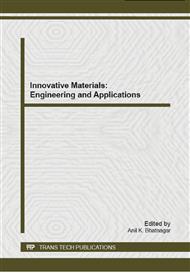p.477
p.482
p.489
p.495
p.503
p.509
p.514
p.520
p.524
Material Phase Transformation during Grinding
Abstract:
This study investigated the process parameters effect on the phase transformation during grinding by experimental validation and correlation analyses. The quantitative material phase link to the kinetics of diffusion-controlled as well as diffusionless transformations in different strain rate and contact zone temperature by examining process parameters is presented. Based upon the mechanical physics-based modeling and prediction for the volume fraction of phase transformation in continuous heating under anisothermal conditions, the correlation between volume fractions of phase in sequential segmented isothermal processes, and grinding process parameters characteristic are developed. In validation of the correlation, a series of maraging steel 250 grinding experiments, XRD measurements, and correlation analyses were pursued. Certain linear correlations between the cutting parameters and the phase transformation were calculated by using the correlation coefficient and the affected degree of cutting parameter, temperature, and strain rate was evaluated by applying partial relation coefficient analysis method. It is practical to alter the part material properties through the phase transformation with process parameters optimal control.
Info:
Periodical:
Pages:
503-508
Citation:
Online since:
October 2014
Authors:
Keywords:
Price:
Сopyright:
© 2014 Trans Tech Publications Ltd. All Rights Reserved
Share:
Citation:


